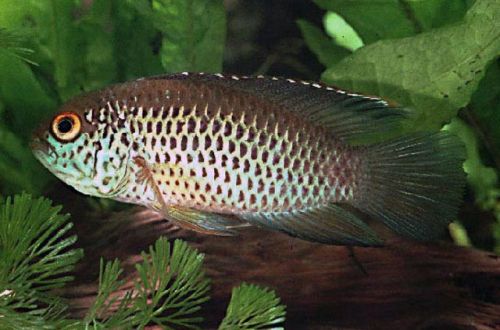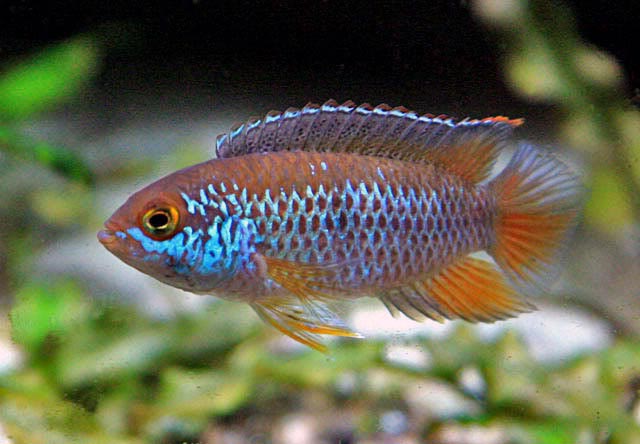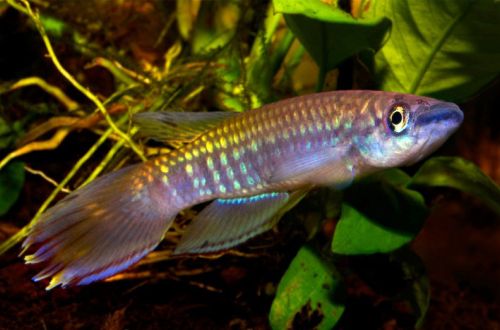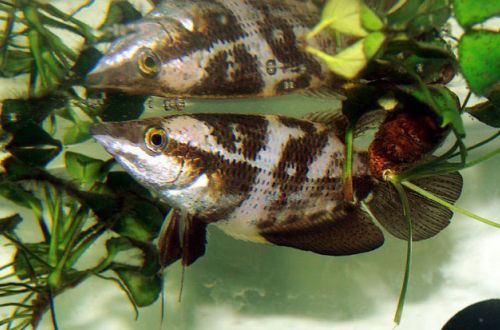
yellow-eyed cichlid
Yellow-eyed cichlid or Nannacara green, scientific name Nannacara anomala, belongs to the Cichlidae family. Beautiful, bright, unpretentious and friendly fish, which will be a great addition to the general aquarium. Due to the ease of maintenance and breeding, it can be recommended to beginner aquarists.

Contents
Habitat
It comes from the Amazon River basin, where it occurs mainly in the right tributaries, and the Tocantins basin from the territory of modern Brazil. Small populations are also found in the coastal rivers of Guyana and Suriname.
Currently, this type of mass is bred on commercial farms in the Far East and Eastern Europe, so the fish have been living in an artificial environment for many generations.
Brief information:
- The volume of the aquarium – from 50 liters.
- Temperature – 22-25°C
- Value pH — 5.8–7.5
- Water hardness – soft (3-8 dGH)
- Substrate type – sandy
- Lighting – subdued
- Brackish water – no
- Water movement – light or moderate
- The size of the fish is 5–7 cm.
- Meals – any
- Temperament – peaceful, except during spawning periods
- Keeping in a group with one male and several females
Description

Adult individuals reach a length of 5–7 cm. Males are somewhat larger and more colorful, blue, green and orange tones dominate in color. The females are smaller, the color is monochromatic yellowish. A characteristic feature of the species, inherent in both sexes, are yellow eyes, which is reflected in one of the popular names – Yellow-eyed cichlid.
Food
Accepts all types of popular feeds (dry, frozen, live). The main condition is that the diet should be varied with the addition of plant components. It is recommended to purchase specialized food for South American cichlids, which will greatly simplify the feeding process.
Maintenance and care, arrangement of the aquarium
The vast majority of Nannacar Greens for sale come from commercial fish farms, so they easily adapt to various home aquarium conditions. However, there are a few recommendations for the design and composition of the water so that the fish feel the most comfortable and show the best color.
The design uses a sandy substrate, a lot of snags and areas with dense vegetation. Lighting is subdued, vegetation floating on the surface will serve as an additional means of shading. It is desirable to maintain the hydrochemical parameters pH and dGH within 6–7.5 and 3–8°, respectively.
Maintenance of the aquarium is reduced to a weekly replacement of part of the water (15–20% of the volume) with fresh and regular cleaning of the soil from organic waste.
Behavior and Compatibility
Peaceful and accommodating species, goes well with other calm fish of a similar size. Problems can only arise during the spawning period, when females become quite aggressive, protecting their offspring. Intraspecific relationships are built on the dominance of one alpha male, so Nannakara green should be kept in a harem-type group. If there are several males in one aquarium, then weaker individuals change color over time and become similar to females.
Breeding / breeding
Breeding is very simple. In favorable conditions and in the presence of a sexually mature male and female (or several females), the appearance of fry is practically guaranteed. Eggs are usually deposited at the bottom. The female not only takes care of the clutch, but will also protect the fry for several weeks after their appearance. To do this, she occupies a small area of about 40 × 40 cm and he drives away anyone who accidentally approaches the borders of her temporary possessions.
Fish diseases
The main cause of most diseases is unsuitable living conditions and poor-quality food. If the first symptoms are detected, you should check the water parameters and the presence of high concentrations of hazardous substances (ammonia, nitrites, nitrates, etc.), if necessary, bring the indicators back to normal and only then proceed with treatment. Read more about symptoms and treatments in the Aquarium Fish Diseases section.





